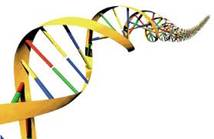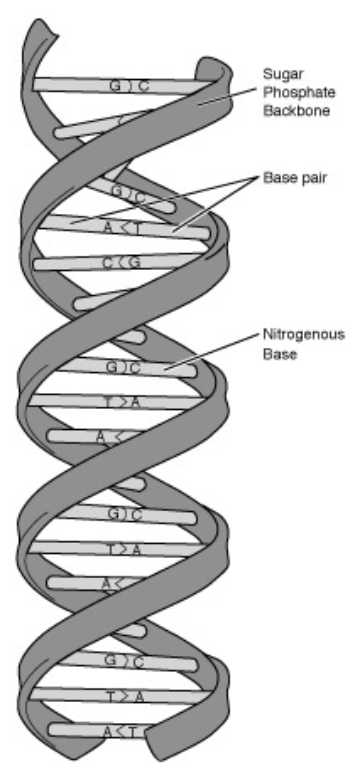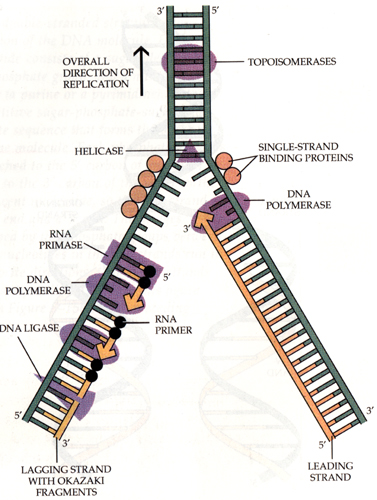What is a nucleic acid?
 Nucleic acids are biological macromolecules present in all living organisms. These are responsible for the storage and transfer of genetic information from generation to generation. Friedrich Miescher, a Swiss biochemist (1869) was the first to isolate nucleic acids from the nucleus of pus cells and Salmon sperm. He called it "nuclein". Altman (1899) coined the term "nucleic acid". Nucleic acids are biological macromolecules present in all living organisms.
Nucleic acids are biological macromolecules present in all living organisms. These are responsible for the storage and transfer of genetic information from generation to generation. Friedrich Miescher, a Swiss biochemist (1869) was the first to isolate nucleic acids from the nucleus of pus cells and Salmon sperm. He called it "nuclein". Altman (1899) coined the term "nucleic acid". Nucleic acids are biological macromolecules present in all living organisms.
Deoxyribonucleic acid (DNA) :
Occurrence:
DNA found in all organisms except a few viruses. The greatest amount of DNA is concentrated in the nucleus. It also occurs in cell organelles like mitochondria, plastids and centrioles.
DNA - The genetic material
Chromosomes mainly consist of nucleoproteins having two components nucleic acids and proteins. One of these should obviously constitute the genetic material.
Chemical Composition
Deoxyribonucleic acid is a polynucleotide molecule consisting of a repeating sequence of monomeric nucleotides arranged in a linear polymeric chain. Each monomeric nucleotide is composed of three components.
I) A five carbon (pentose) sugar – Deoxyribose
II) A phosphoric acid group
III) A nitrogenous base (either purine or pyrimidine)
Purine bases are adenine and guanine. Pyrimidine bases are thymine and cytosine. The pyrimidine uracil is absent.
Adenine pairs with thymine by two hydrogen bonds. Cytosine pairs with guanine by three hydrogen bonds.
Watson-Crick model of DNA
 DNA Replication Process :
DNA Replication Process :
1. Replication occurs inside the chromosomes.
2. It occurs during interphase.
3. The parent DNA strands function as templates for the synthesis of new DNA strands.
4. New DNA is produced by semi conservative process. Of the two strands produced, one strand is the parental strand and the second strand is newly synthesized.
5. Replication starts at a specific point called origin.
6. At the site of origin, the two strands separate. This separation is brought about by the enzyme helicase.
7. At the point where the two strands are separated, a replicating fork is formed. The fork appears in the form of a Y. The duplication of DNA is brought about by the movement of the replication fork.
8. The separated DNA strands act as templates.
9. DNA synthesis requires a RNA primer. The primer is a short RNA polynucleotide chain.
The primer RNA is synthesized by the DNA template close to the origin of replication. It is synthesized by RNA polymerase. s
10. Synthesis of the new DNA strand takes place by the addition of DNA nucleotides to the ribonucleotide of the RNA primer. This leads to the elongation of the primer nucleotide in the 5' -3' direction. This is catalyzed by the enzyme DNA polymerase.
11. In one parent DNA strand, the daughter strand is synthesized as a continuous strand. This strand is called leading strand because it is synthesized first.
12. In the second DNA strand, the daughter strand begins slightly later. Hence this daughter strand is called lagging strand. The lagging strand is synthesized in short fragments called Okazaki fragments.
The replication is semi conservative discontinuous because the DNA is synthesized in short segments.
13. The enzyme DNA ligase joins the Okazaki fragments into a long polynucleotide chain.
14. The RNA primer is degraded at the end of replication.
15. Replication may occur in one direction from the point. of origin or in both directions. When replication occurs in only one direction, it is called unidirectional replication. When replication occurs in both directions, it is called bidirectional replication.
16. The newly formed chain is exactly complementary to the template chain.
17. In replication, both strands are involved. The synthesis occurs in the 5'-3' direction in both strands. In one strand, it goes from left to right and in the other strand in the reverse direction.
DNA replication
Functions of DNA
1.DNA is the genetic material in most of the organisms except a few RNA viruses, controlling the structure and function of an organism.
2.DNA is capable of self replication or duplication and passes on the hereditary characters to the next generation.
3.DNA undergoes mutation and genetic recombination.
4.DNA synthesizes RNA.
5.DNA sends coded information for protein synthesis. The proteins control the structure and function of the cells.
What is the difference between a DNA and the RNA?
Want to know more about DNA? Click here to schedule a live help with an eTutor!
About eAge Tutoring :
eAgeTutor.com is the premium online tutoring provider. Using materials developed by highly qualified educators and leading content developers, a team of top-notch software experts, and a group of passionate educators, eAgeTutor works to ensure the success and satisfaction of all of its students.
Contact us today to learn more about our guaranteed results and discuss how we can help make the dreams of the student in your life come true!
Reference Links :
- http://en.wikipedia.org/wiki/Nucleic_acid
- http://en.wikipedia.org/wiki/DNA_replication
- http://en.wikipedia.org/wiki/DNA
- http://en.wikipedia.org/wiki/Polymerase_chain_reaction
- http://en.wikipedia.org/wiki/Prokaryotic_DNA_replication
- http://www.youtube.com/watch?v=hfZ8o9D1tus
